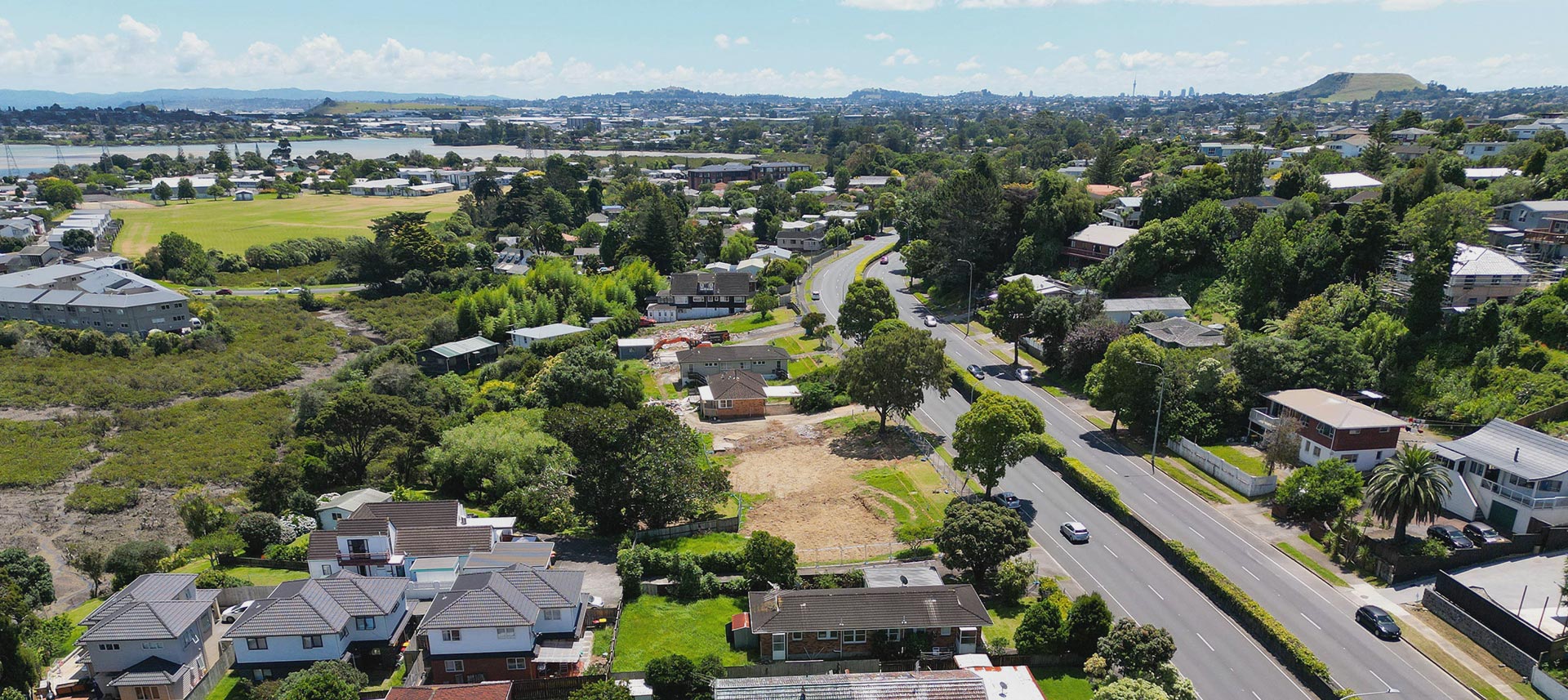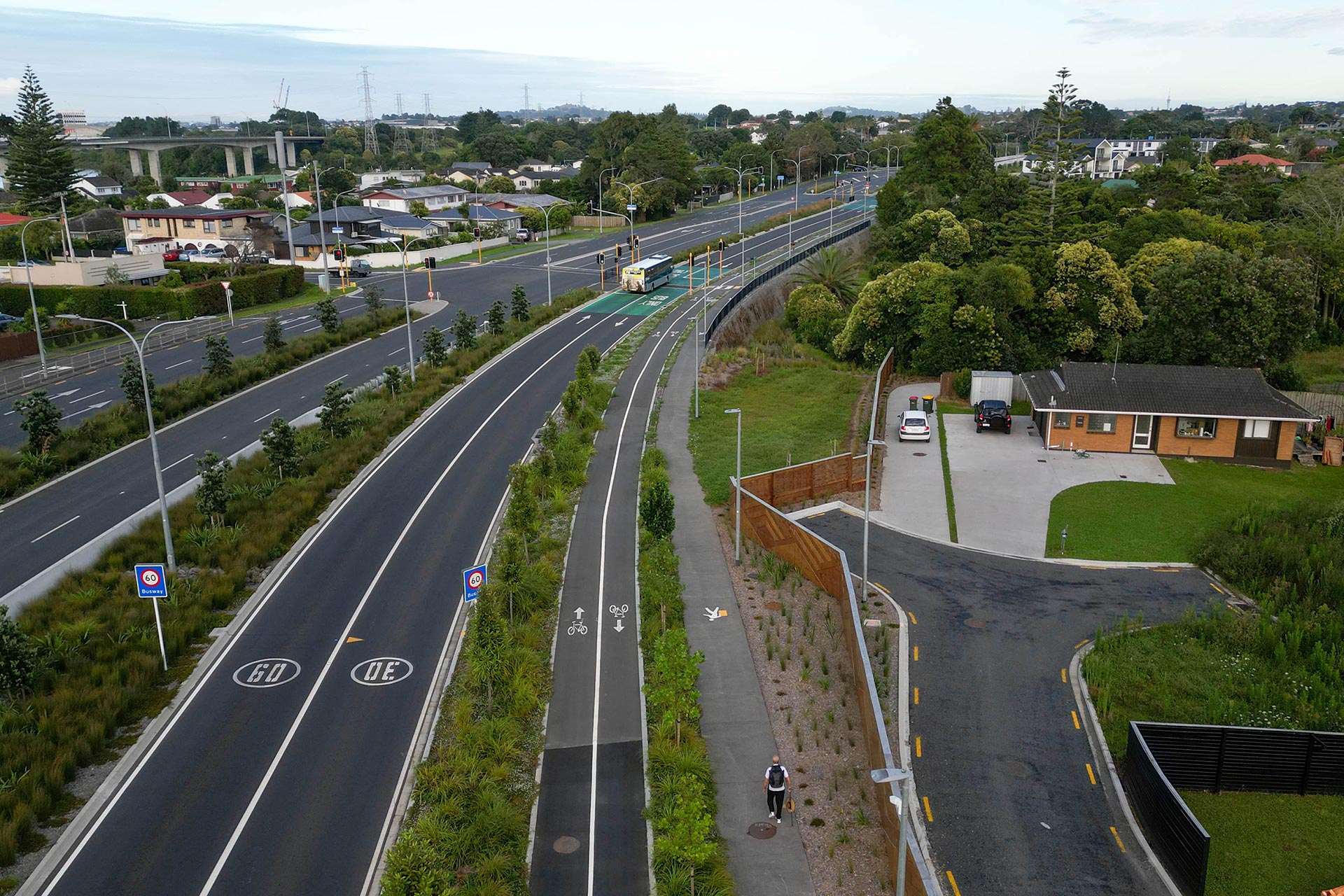We all want better public infrastructure to serve our communities, but what happens when you own property which may be affected by a proposed infrastructure project, such as a new road, busway or rail (also known as public works)?
When Private Property is required for Public Works – what can you do during the Designation process
What happens when you own property which may be affected by a proposed infrastructure project such as a new road, busway or rail, also known as public works? A reported 475 property owners are facing this very predicament in relation to Auckland Transport’s planned Airport to Botany Rapid Transit project which is part of the greater Southwest Gateway Programme. More information on the project itself can be found here.
The AT article looks at how a Requiring Authority – usually the Government (acting through the relevant agency), a local authority, or a utilities company – obtains a Designation for a new public works project and what affected persons can do during this process.
What is a Designation?
A Designation is an area of land identified on a local council’s district plan for a particular purpose, such as a future transport route. Once a Designation is approved, the relevant Requiring Authority can carry out the relevant public works in the designated area without needing a land-use consent. The Designation will also give the Requiring Authority the basis to take land (or interests in the land) by private treaty or compulsory acquisition under the Public Works Act 1981. (See also our separate article What are my entitlements when my land is to be acquired for Public Works.)
How does a Requiring Authority obtain a Designation?
A Requiring Authority obtains a Designation by lodging a Notice of Requirement identifying the land it requires for a particular purpose with the relevant local council. Currently, this process is governed by the Resource Management Act 1991.* If the council is also the Requiring Authority, it can approve, cancel or amend the requirement. (A board of inquiry or the Environment Court may decide notices for larger public work projects.)
*The legislative framework governing resource management in NZ is being reformed with two of three proposed new bills having been introduced to parliament in December 2022. This article refers to the current framework governed by the Resource Management Act 1991.

ABOVE: private properties have been acquired and construction is underway along Ti Rakau Drive, East Tamaki, Auckland, for the Airport to Botany Rapid Transit public works project
How does a notice of requirement affect landowners within the designated area?
Although the Requiring Authority can only start actual physical works once a Designation is approved, as soon as a Notice of Requirement is lodged, restrictions apply to any other uses of the affected land. If you own land affected by the Notice, you will not be able to do anything that would prevent or hinder the public works without the written approval of the Requiring Authority. Such activities include restrictions on subdivisions or construction which would increase the capital value of the affected land and, thereby, the cost of acquiring the land.
If you are affected by a Public Works Designation – what can you do?
Before a Requiring Authority lodges a Notice of Requirement, it must consider the underlying policies and plans, the environmental effects and all practicable options for routes, sites and methods relating to the proposed public works.
If you are affected and want your views heard, you should be alert to any plans and rumours concerning your property. Good local networks are vital. The Requiring Authority may consult with the community to gain feedback on its proposal before lodging its Notice of requirement. Getting involved at this early stage is important.
You may still have the opportunity to make submissions once the Notice of Requirement is lodged. Who can make submissions will depend on whether the Notice is:
- Publicly notified (anyone can make a submission);
- Limited notified (only affected persons can make submissions); or
- Non-notified (no one can make submissions).
We cannot emphasise this enough: getting your objections and constructive alternative suggestions before the Council at this stage is paramount. Consider working with a group of similarly affected landowners and, where applicable, obtain professional advice. Aim to make the strongest case you can for any changes you seek to the Requiring Authority’s proposal. You should also recognise that you may face opposing views from other submitters (particularly where you are suggesting alternate routes) and accept the possibility (and costs) of needing to appeal the decision if it does not go in your favour.
Need help with a Public Works Designation Notice?
Give us a call if you are affected by a “land grab” for public infrastructure works. We can provide practical legal advice at all stages during the designation process. Our team can work with other consultants such as valuers, engineers, planners, traffic consultants and others to put your best case forward in written submissions and, if required, at hearings.






